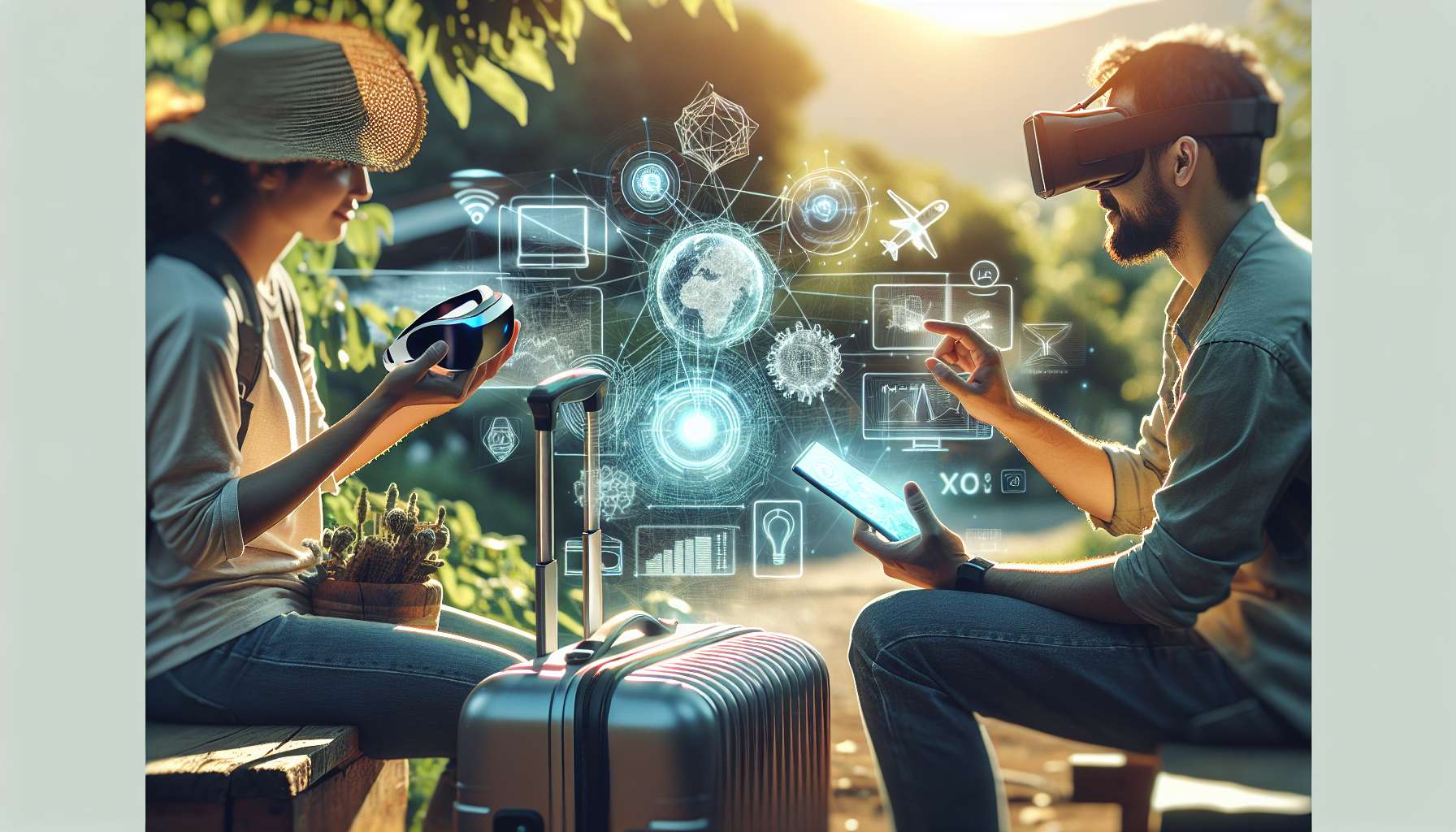Enhancing Travel with Augmented Reality and IoT Integration
Imagine a world where your travel experiences are seamless, efficient, and personalized to your preferences. Thanks to the integration of Augmented Reality (AR) and Internet of Things (IoT) technologies, this vision is becoming a reality. In this article, we will explore how AR and IoT are revolutionizing the travel industry, creating unforgettable journeys for travelers around the globe.
1. Augmented Reality: Enhancing the Travel Experience
Augmented Reality is a technology that overlays digital information onto the real world, enhancing our perception and interaction with our surroundings. In the context of travel, AR can provide travelers with real-time information, interactive maps, and immersive experiences that enrich their journey.
- Real-time Information: AR applications can provide travelers with up-to-date information about their destination, such as weather updates, local events, and nearby attractions. This ensures that travelers are well-informed and can make the most of their time.
- Interactive Maps: AR-powered maps allow travelers to navigate unfamiliar cities with ease. By overlaying directions and points of interest onto the real world, travelers can explore their surroundings confidently, without the need for paper maps or constant reliance on their smartphones.
- Immersive Experiences: AR can transform ordinary tourist attractions into extraordinary experiences. For example, imagine visiting a historical site and using your smartphone or AR glasses to see how it looked centuries ago, with virtual characters and objects bringing the past to life.
2. Internet of Things: Connecting the Travel Ecosystem
The Internet of Things refers to the network of interconnected devices that collect and exchange data. In the travel industry, IoT enables seamless connectivity between various components of the travel ecosystem, including transportation, accommodation, and tourist attractions.
- Smart Transportation: IoT integration allows travelers to have a hassle-free journey from start to finish. Smart airports can use IoT sensors to monitor passenger flow, optimize security procedures, and provide real-time updates on flight statuses. Smart cars and public transportation systems can also leverage IoT to enhance safety, efficiency, and comfort for travelers.
- Connected Accommodation: IoT-enabled hotels and vacation rentals offer personalized experiences for guests. From smart room controls to personalized recommendations, IoT devices can create a comfortable and convenient stay for travelers. For example, guests can use voice commands to adjust room temperature, request room service, or even control the lighting and entertainment systems.
- Smart Attractions: IoT integration in tourist attractions can enhance visitor experiences. For instance, museums can use IoT sensors to provide interactive exhibits, personalized audio guides, and real-time information about artworks. Theme parks can leverage IoT to optimize ride queues, enhance safety measures, and offer personalized recommendations based on visitor preferences.
3. The Power of Integration: AR and IoT Working Together
While AR and IoT have their own unique capabilities, their true potential lies in their integration. By combining the power of AR and IoT, travel companies can create truly immersive and personalized experiences for their customers.
- Smart Travel Guides: AR-powered travel guides can leverage IoT data to provide real-time recommendations based on a traveler’s preferences, location, and historical data. These guides can offer personalized itineraries, suggest nearby attractions, and even make reservations on behalf of the traveler.
- Virtual Concierge Services: Hotels and travel companies can use AR and IoT to offer virtual concierge services. Travelers can use their smartphones or AR glasses to access personalized recommendations, book activities, and receive real-time assistance throughout their journey.
- Enhanced Safety and Security: AR and IoT integration can enhance safety measures for travelers. For example, AR glasses can provide real-time navigation and emergency alerts, while IoT sensors can monitor crowd density and detect potential security threats.
As we look to the future, the possibilities of AR and IoT integration in the travel industry are endless. From personalized travel experiences to improved safety measures, these technologies are reshaping the way we explore the world. Embracing AR and IoT can help travel companies stay ahead of the curve, providing their customers with seamless journeys and unforgettable memories.





